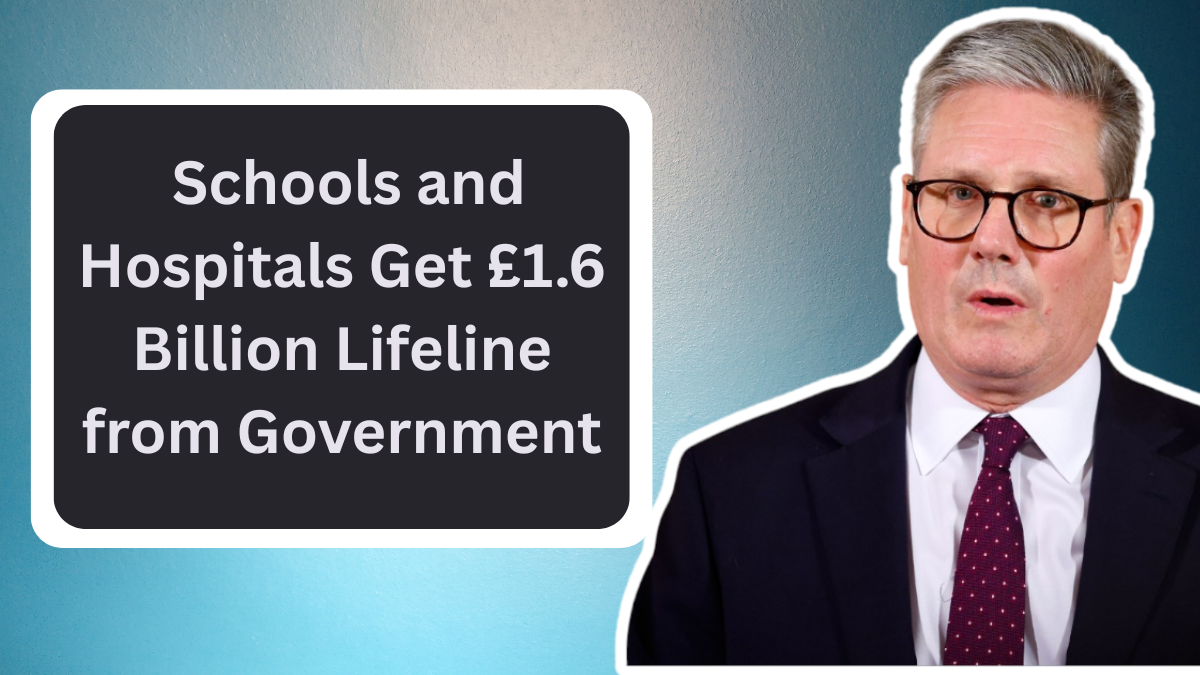In a powerful step to uplift the nation’s future, the UK Government has pledged £1.6 billion for vital repairs and improvements to hospitals and schools across the country. This investment is not just about fixing broken walls or outdated equipment — it’s about strengthening the backbone of our society. Children deserve safe and inspiring schools to learn in. Patients need clean, modern spaces to recover. This funding aims to make both dreams a reality.
Why This Funding Matters
Over the years, many schools and NHS facilities have struggled with ageing infrastructure. Leaky roofs, broken heating systems, and outdated classrooms have made it harder for children to study and for patients to heal comfortably. These problems can no longer be ignored.
The government recognises that improving these buildings is a way of investing directly in people’s lives. Whether it’s a child learning in a safe classroom or a patient receiving care in a modern ward — the quality of buildings matters deeply.
Breakdown of the £1.6 Billion Allocation
The funding will be used across two major sectors:
1. Schools
- A large portion will go toward repairing worn-out classrooms, old toilets, damaged walls, and broken windows.
- Schools with the most urgent building issues will be prioritised.
- Some funding will also help make schools more energy-efficient, saving long-term costs and supporting environmental goals.
2. Hospitals and NHS Facilities
- Essential health buildings needing urgent attention will receive upgrades to ensure safe and high-quality care.
- Older hospitals will get structural repairs, improved plumbing and ventilation, and new medical facilities where needed.
- Some hospitals may also see upgrades to help reduce waiting times and improve patient comfort.
Long-Term Impact
This isn’t just a one-time boost. The government aims to create long-lasting benefits:
- Health Benefits: Clean, safe, modern hospitals can reduce infections, improve recovery, and boost staff morale.
- Educational Improvements: Comfortable learning environments encourage better focus, attendance, and results.
- Economic Growth: Construction and repair work will create hundreds of local jobs, boosting regional economies.

Who Will Oversee the Repairs?
The Department for Education (DfE) and the Department of Health and Social Care (DHSC) will manage and supervise how the funds are distributed and used. Both departments will work closely with local councils and hospital trusts to ensure the right facilities get timely support.
More details can be found on the official UK Government site: gov.uk
Government’s Statement
A government spokesperson said,
“Every child deserves to go to school in a building that is safe and inspiring. Every patient deserves to be cared for in a modern facility. This investment will help us reach that goal.”
This statement reflects a serious commitment to the nation’s well-being, showing that repair and renewal are just as important as new construction.
This £1.6 billion support is a sign of hope for millions. It’s a promise that no matter your background, your hospital and your school will be treated with the importance they deserve. The government’s step shows that behind bricks and cement lie human dreams — dreams that deserve solid walls, working heaters, and clean floors. Whether you’re a student or a patient, better days are being built.
Frequently Asked Questions (FAQs)
Q1: What is the main purpose of the £1.6 billion fund?
A1: To repair and improve schools and NHS buildings across the UK.
Q2: How will schools benefit from the funding?
A2: By fixing urgent issues like broken toilets, unsafe classrooms, and by making schools more energy-efficient.
Q3: Which hospitals will receive this funding?
A3: NHS facilities in most urgent need will be prioritised for upgrades and safety improvements.
Q4: Who will manage the fund distribution?
A4: The Department for Education and Department of Health and Social Care will oversee the project.
Q5: When will the work begin?
A5: Some repairs have already begun, and more projects will roll out in phases throughout 2025 and beyond.



















